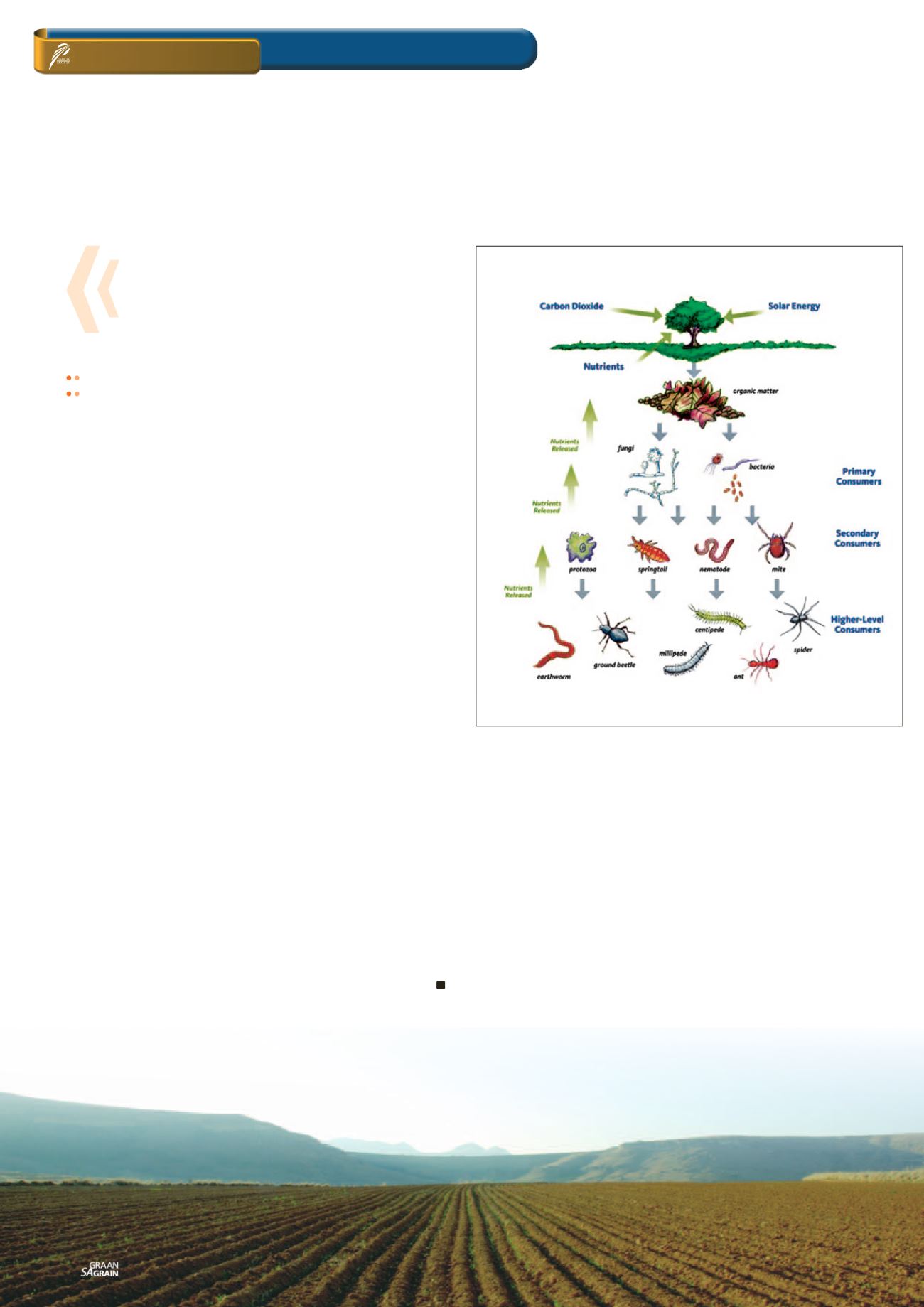

On farm level
Management practices
A plant's rhizosphere is a microbial hot spot and is considered one
of the most complex ecosystems on earth (Jones and Hinsinger,
2008; Hinsinger
et al
., 2009; Raaijmakers
et al
., 2009). The rhizosphere
composition as well as microbiome of different crops, e.g. maize
and soybean, differ significantly (Wang
et al
., 2017b). Despite the di
versity of microbes that is associated with the rhizosphere of differ
ent plants, one can distinguish between two main groups based on
their relationship with the plant:
Microbes that benefit from living (photosynthesising) plants.
Microbes that benefit from dead (composting) plant material.
The first group of microbes obtains a major part of their carbon
(sugar) from living, photosynthesising plants and as a result uses
various mechanisms to keep plants healthy, stress-free and in an
optimal state of photosynthesis. These microbes play an essen
tial role in the viability, stress tolerance and productivity of a crop.
Prominent members of the beneficial group are Bacillus, Tricho
derma, Pseudomonas, Rhizobium, Azospirilium, Streptomyces, etc.
(Mendes
et al
., 2013)
The second group of microbes that colonises the rhizosphere is
microbes that obtain their carbon from dead plant material (cellu
lose). These microbial disease complexes target weak plants in or
der to recycle them as carbon for the soil food web. The ‘famous
five’ that are part this group are Fusarium, Phythium, Phytopthera,
Rhizoctonia and plant parasitic nematodes (Whipps, 2001).
Healthy soil provides a good balance between beneficial microbes
and pathogens. Unfortunately, most agricultural soils have high
numbers of the pathogens and as a result plants are under constant
attack when environmental or nutritional stresses surface.
In recent years, crop-specific, rhizosphere inoculums have provided
a valuable tool in having a degree of control over who gets to the
rhizosphere first. These inoculums consist of beneficial rhizosphere
microbes that have the ability to establish in the rhizosphere (specifi
cally the endo-rhizosphere) and form a synergistic relationship with
each other as well as with the plant. When the bulk soil food web
becomes healthier and more balanced, the effect of these inoculums
becomes less prominent (Garbeva
et al
., 2004).
To summarise, the short-term strategy for improving plant health is
to focus on the rhizosphere with crop-specific rhizosphere inocu
lums that can counter the imbalances between beneficial microbes
and pathogen complexes. Soil health of the bulk soil on a specific
farm and environment is a more complex long-term strategy that
requires an individual plan based on the various factors involved.
References
Di Cello, F, Bevivino, A, Chiarini, L, Fani, R, Paffetti, D and Tabacchioni, S. 1997.
Biodiversity of a Burkholderia cepacia population isolated from maize rhizosphere
at different plant growth stages
. Appl Environ Microbiol 63:4 485 - 4 493.
Garbeva, P, Van Veen, JA, and Van Elsas, JD. 2004.
Microbial diversity in soil: Se-
lection of microbial populations by plant and soil type and implications for disease
suppressiveness
. Annu Rev Phytopathol 42:243 - 270.
Mendes, R, Garbeva, P and Raaijmakers, JM. 2013.
The rhizosphere microbiome:
Significance of plant beneficial, plant pathogenic, and human pathogenic microor-
ganisms
. FEMS Microbiol Rev 37 (5):634 - 663.
Wang, P, Marsh, EL, Ainsworth, EA, Leakey, ADB, Sheflin, AM and Schachtman, DP.
2017b.
Shifts in microbial communities in soil, rhizosphere and roots of two major
crop systems under elevated CO
2
and O
3
. Sci Rep 7:15019.
Wang, R, Zhang, H, Sun, L, Qi, G, Chen, S and Zhao, X. 2017a.
Microbial community
composition is related to soil biological and chemical properties and bacterial wilt
outbreak
. Sci Rep 7:343.
Whipps, JM. 2001.
Microbial interactions and biocontrol in the rhizosphere
. J Exp
Bot 52 (1): 487 - 511.
Zhao, J, Liu, J, Liang, H, Huang, J, Chen, Z, Nie, Y, Wang, C and Wang, Y. 2018.
Manipulation of the rhizosphere microbial community through application of a new
bio-organic fertilizer improves watermelon quality and health
. PLoS ONE 13(2):
e0192967.
The
who’s who
Figure 1: The soil food web is the community of organisms living in the
soil all or part of their lives.
Source: Wikimedia Commons
Oktober 2018
84
Grain SA/Sasol photo competition
















